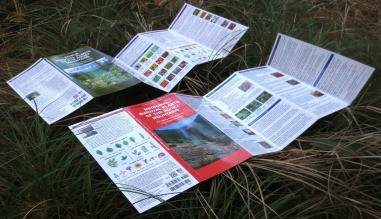
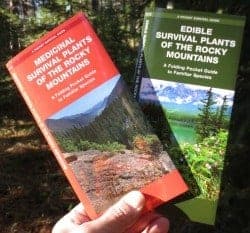 Survival Guides are a dime-a-dozen, but good ones, the real save-your-life guides are as rare as hens teeth. Luckily the two new plastic-covered foldouts from Jason Schwartz over at Rocky Mountain Bushcraft are an outstanding and necessary contribution to your survival kit that literally could save your life. For less than the cost of a box of American made ammo, you could outfit your survival gear with some to-the-point literature can make a difference when on an afternoon hike, or when the S really hits the fan.
Survival Guides are a dime-a-dozen, but good ones, the real save-your-life guides are as rare as hens teeth. Luckily the two new plastic-covered foldouts from Jason Schwartz over at Rocky Mountain Bushcraft are an outstanding and necessary contribution to your survival kit that literally could save your life. For less than the cost of a box of American made ammo, you could outfit your survival gear with some to-the-point literature can make a difference when on an afternoon hike, or when the S really hits the fan.
By Doc Montana, a Contributing Author of Survival Cache and SHTFBlog
Published in 2016 by the ultimate pocket guide company, the Waterford Press, these guides join an ever growing list of speciality reference booklets. “Putting the World in your Pocket” is Waterford’s motto, and it could be true given they’ve had over 500 publications with over five million sales.
Fast Food
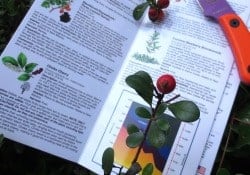 The two water-resistant guides under discussion are Edible Survival Plants of the Rocky Mountains, and Medicinal Survival Plants of the Rocky Mountains. Both guides are in the classic Waterford six-fold design leading to 12 individual vertically oriented pages. The full-color guides are printed on white paper and laminated heavily with factory-installed bends between pages.
The two water-resistant guides under discussion are Edible Survival Plants of the Rocky Mountains, and Medicinal Survival Plants of the Rocky Mountains. Both guides are in the classic Waterford six-fold design leading to 12 individual vertically oriented pages. The full-color guides are printed on white paper and laminated heavily with factory-installed bends between pages.
The pictures are a godsend and make for fast field ID of plants. The brief descriptions confirm the identity and instructions follow for applying the part of the plant in the most useful form. Some are used as tea, some as topical, and some eaten outright.
The philosophy behind the guides according to their author is to, “provide a set of handy, yet realistic reference guides that will help hikers and backpackers lost in the Rocky Mountains forage for food, or treat injuries and ailments using wild plants and trees.” An assumption the author makes is that most survival situation are from three days to a week. This is reflected in the use of often low-calorie plants to get you to a better place and keep your spirits up.
Walkabout
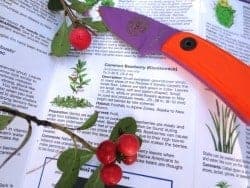 In my own testing of the guides, I wandered my million acre backyard and looked for both plants listed in the guides and to see if a plant was in the guide. In most cases the obvious plants were covered, while locating specific plants took some time. A suggestion, if space permitted, would be to mention common locations of plants if they exist. Like kinnikinnick, dandelion, and thistle on old roads where the soil had been compacted decades earlier.
In my own testing of the guides, I wandered my million acre backyard and looked for both plants listed in the guides and to see if a plant was in the guide. In most cases the obvious plants were covered, while locating specific plants took some time. A suggestion, if space permitted, would be to mention common locations of plants if they exist. Like kinnikinnick, dandelion, and thistle on old roads where the soil had been compacted decades earlier.
Knowledge is Power and Power Corrupts
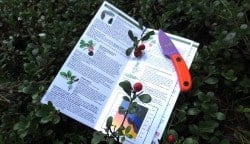 Poaching plants is easily as abundant as poaching animals. While the hunting laws don’t often address North American medicinal plants, there is the concern that someone with a little knowledge and a bunch of free time might pillage the local area of important plants. And in one rare case with the Curly-Cup Gumweed, there is a plant “species of concern” because it resembles a medicinal plant mentioned in the guide known as the Howell’s Gumweed. There is a very slim chance in a small region of the west that the more rare related species (Howell’s Gumweed) will be over harvested by an overzealous collector, but human nature is anything but predictable.
Poaching plants is easily as abundant as poaching animals. While the hunting laws don’t often address North American medicinal plants, there is the concern that someone with a little knowledge and a bunch of free time might pillage the local area of important plants. And in one rare case with the Curly-Cup Gumweed, there is a plant “species of concern” because it resembles a medicinal plant mentioned in the guide known as the Howell’s Gumweed. There is a very slim chance in a small region of the west that the more rare related species (Howell’s Gumweed) will be over harvested by an overzealous collector, but human nature is anything but predictable.
Related: Bushcraft Mushrooms
According to Schwartz, the highlighted plants were chosen for the wide distribution, easily identifiable traits, and ubiquitous presence across landscape and seasons. So with that said, you can take Rocky Mountains with a grain of salt. You will encounter most of the plants in these guides well outside the rugged terrain of the west, but not so much on the plains, east coast, or desert America, of course.
The Saguache County Colorado Sheriff’s Department found the guides so particularly helpful that they adopted them as essential equipment to have when backcountry survival might be an issue.
The Doctor Is In
Half the pages of the Medicinal Survival Plants of the Rocky Mountains IDs 18 plants of which seven are trees. The other half of the guide explains treatment options, medicinal preparations including infusions, tea, decoction, juicing as well as plant feature identification and author bio.
Half the Edible Survival Plants of the Rocky Mountains IDs 19 plants of which three are trees. And the reverse six pages of the over half include survival basics, 16 images of types of edible plants, the steps of the Universal Edibility Test, general plant preparation and eating practices, and a note on edible plant myths.
Read Also: Tree Bark as an Emergency Food
Each entry for a plant across both guides includes a description, the habitat, harvesting tips, preparation (in the Survival guide), and comments and cautions. I had to smile when reading about the Ponderosa Pine in the Survival guide. Jason Schwartz is a bushcrafter through and through. In the middle of the description Jason uses 15 words to explain baton. The baton, by the way and in Jason’s words is, “an arm’s length branch used as a mallet to pound the back of the knife.” Once a teacher, always a teacher.
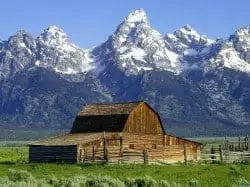 Here’s the deal with these guides. They cost little and weigh almost nothing. They are filled with lifesaving options for when you really need them, and you don’t even need to read them ahead of time (but I would suggest it). And anyone living within 200 miles east or west of the Continental Divide should spring for the $8 apiece and put a set in every bug out bag and car or truck glove box. Better yet, head outdoors and familiarize yourself with the local edible and medicinal flora. You’ll thank me and Jason later.
Here’s the deal with these guides. They cost little and weigh almost nothing. They are filled with lifesaving options for when you really need them, and you don’t even need to read them ahead of time (but I would suggest it). And anyone living within 200 miles east or west of the Continental Divide should spring for the $8 apiece and put a set in every bug out bag and car or truck glove box. Better yet, head outdoors and familiarize yourself with the local edible and medicinal flora. You’ll thank me and Jason later.
Visit Sponsors of SurvivalCache.com
from SurvivalCache http://survivalcache.com/survival-gear-review-survival-guides-to-edible-and-medicinal-plants-of-the-rocky-mountains/


No comments:
Post a Comment